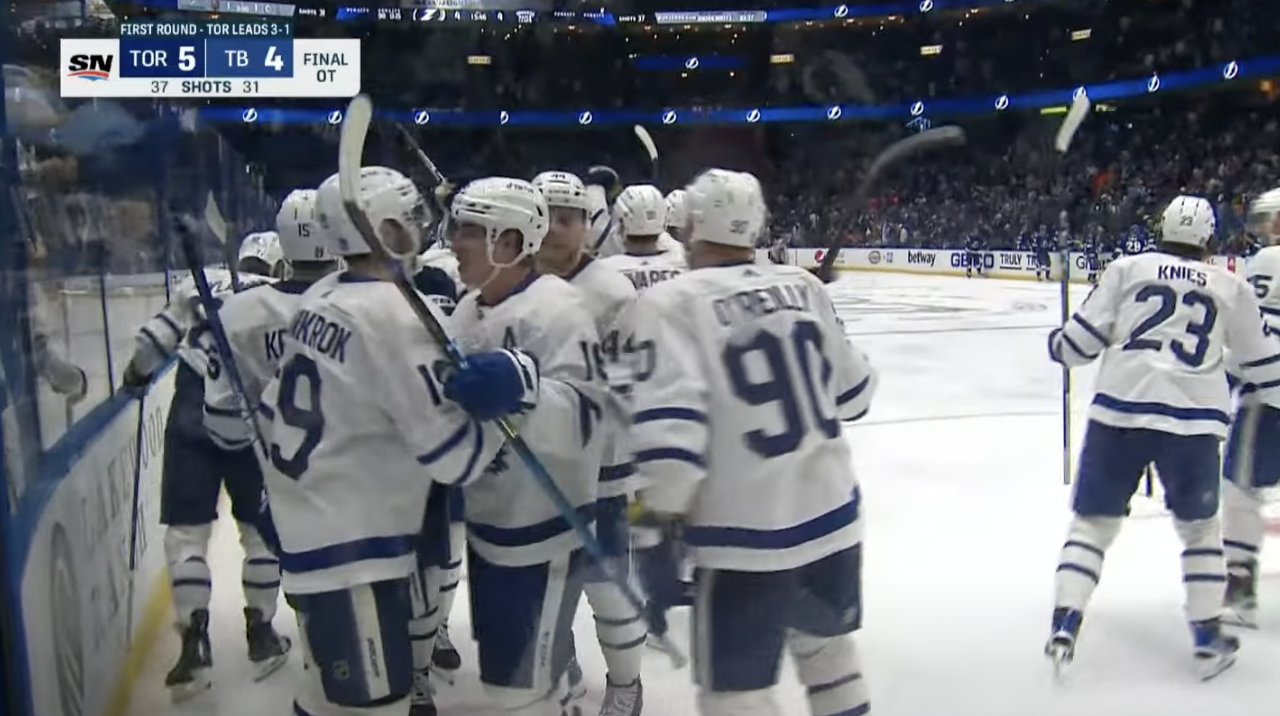The Rumblen viesti otteluketjusta HFBoardsilta - lainaus alla.
Jack Han sends out a newsletter to his subscribers whenever he sees something noteworthy in any of the playoff games. They break down the tactical side of the game for the laymen which is something that is sorely lacking in the hockey world. Figured I would summarize his latest newsletter here which he just sent out.
- Toronto wants to go North as fast as possible. The fastest method of getting to any point on the ice is obviously a straight line.
- Tampa has adjusted to game 2 beat down by going to an aggressive 2-3 forecheck.
- On dump ins, the two forwards, F1 and F2 aggressively attack the dmen looking for breakouts. The third hangs back for support. Han refers to this third forward as the passive 3 as he is sitting back and reading the play to see where to go next.
- Occasionally the puck rings around the back of the net and to the other side, that's where the passive 3 would step up and attack.
- This type of forecheck is good at attacking teams that like to get out as quickly as possible because the north south passing lanes are covered
Toronto's adjustments and they did this in the third period:
- The 2-3 forecheck is susceptible to East-West teams, Toronto is a North-South team as they like get out of the zone as fast as possible and fastest route out is a straight line. In a 2-3 the neutral zone is wide open so on breakouts as the passive 3 can only cover so much and the D-men are outnumbered by rushing forwards. The forwards vs a 2-3 want to separate wide out and provide East-West passing lanes to each other instead of being stacked on top of one another.
- Toronto prefers to play a 1-1-3 netural zone forecheck. Now you see why Tampa attacks in a 2-3. In a 1-1-3 the forward are arranged directly in front of each other, the two d-men that hang back are arranged in a triangle formation behind the trailing forward. Each player in this type of forecheck only has one passing lane to the player ahead of them. The 2-3 is particularly strong against that as it has 2 forwards attacking 1 passing lane off of a dump in.
Han provides some gifs of how Toronto adjusted in the third but I can't link from my email on my phone so I'll describe it.
Sequence 1 - Matthews forces a Tampa turnover, passes it to Jarmkrok who's on the same side of the ice as he is (near the penalty boxes). The 2 Tampa F's are now behind the puck, Jarmkrok instead of going straight out and potentially being attacked by the passive 3, elects to head towards the middle which draws the passive 3 towards him and opens up space on the ice for Matthews rushes forward. This creates a diagonal passing lane for Jarmkrok to a rushing Matthews who makes an easy entry as both Tampa dmen are on their heels.
Sequence 2 - Nylander retrieves the puck, behind the net chased by the two Tampa forwards (the 2 in the 2-3), passes the puck to Holl who's by the benches, Holl. The passive 3 who's been sitting at the blue line sees this and begins to attack Holl. This leaves the entire left side of the ice wide open so Holl makes a quick outlet to Matthews at the penalty boxes on the opposite side who makes a clean entry into the Tampa zone.
Basically what Han is suggesting here is that the Leafs adjust by playing East-West more when they read that Tampa is in a 2-3 (remember that not all teams attack the same way all game,). In doing this they play a slower game and don't transition as fast but they defend the Tampa forecheck better. If Tampa gets away from the aggressive 2-3 forecheck, Toronto can go back to a 1-1-3 as that is what they're best at. The coaches have to recognize this faster and not wait until period intermissions to change up the breakout strategy though.



